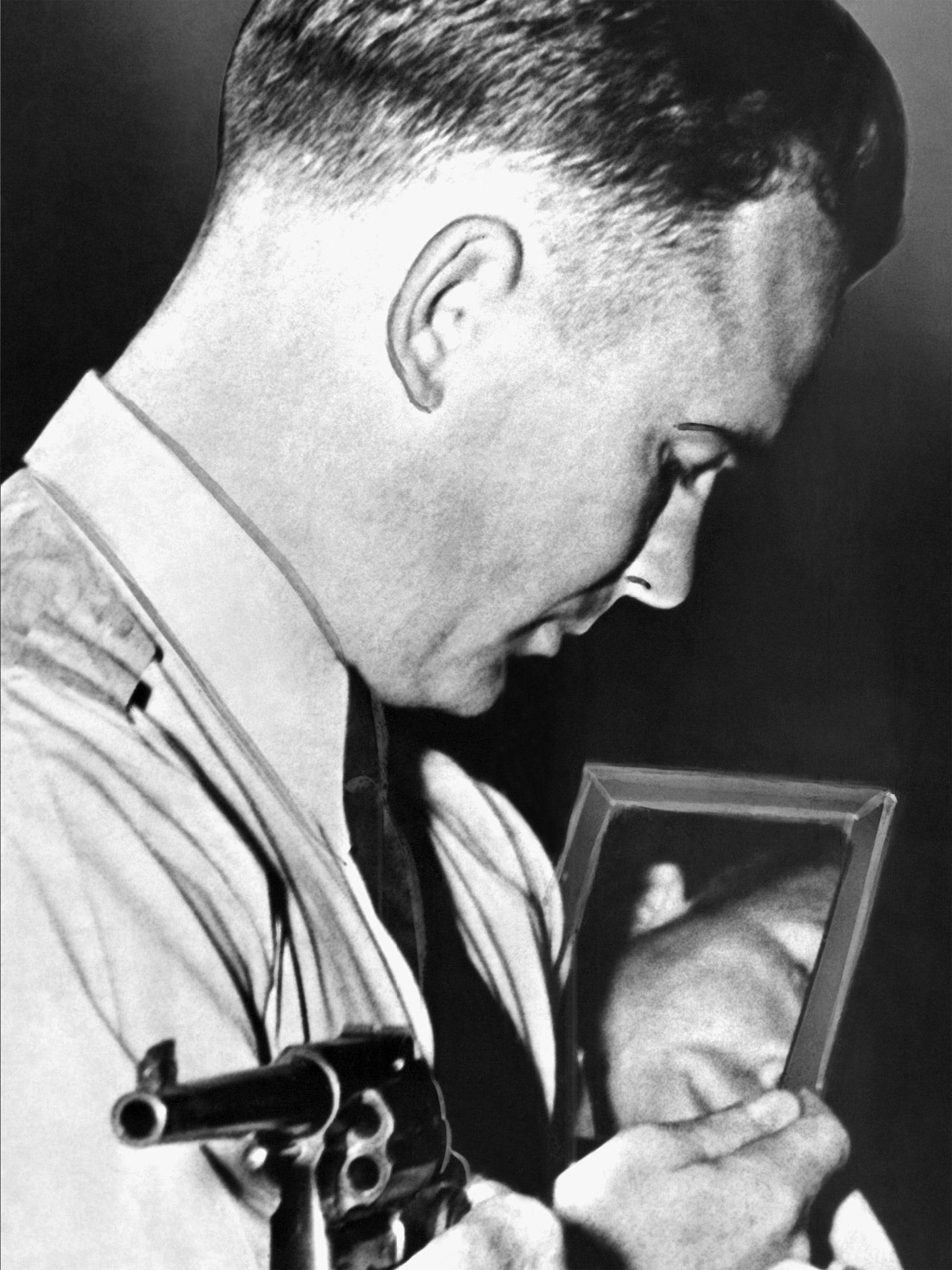Walter Walsh: FBI marksman who killed a clutch of Depression-era gangsters and later became the world's oldest Olympian
From the heyday of the old West, the gunslinging lawman has been a part of the American myth. The 20th century incarnation of the breed was Walter Walsh, who while working for the FBI cut swathes through the infamous gangsters of the Depression Era, before becoming an Olympic marksman and a trainer of generations of snipers for the US Marines.

Your support helps us to tell the story
From reproductive rights to climate change to Big Tech, The Independent is on the ground when the story is developing. Whether it's investigating the financials of Elon Musk's pro-Trump PAC or producing our latest documentary, 'The A Word', which shines a light on the American women fighting for reproductive rights, we know how important it is to parse out the facts from the messaging.
At such a critical moment in US history, we need reporters on the ground. Your donation allows us to keep sending journalists to speak to both sides of the story.
The Independent is trusted by Americans across the entire political spectrum. And unlike many other quality news outlets, we choose not to lock Americans out of our reporting and analysis with paywalls. We believe quality journalism should be available to everyone, paid for by those who can afford it.
Your support makes all the difference.From the heyday of the old West, the gunslinging lawman has been a part of the American myth. The 20th century incarnation of the breed was Walter Walsh, who while working for the FBI cut swathes through the infamous gangsters of the Depression Era, before becoming an Olympic marksman and a trainer of generations of snipers for the US Marines.
When he died last month, Walsh had lived longer than any FBI special agent in history. He joined the Bureau in 1934, when it was still technically known as the Division of Investigation (DOI), and its legendary director J Edgar Hoover was launching his "War on Crime".
That year saw the first agents authorised to carry firearms – and Walsh, straight out of law school but already a recognised deadshot with pistol and rifle, was a natural to be one of them.
Almost at once he was put on some of the biggest cases. After the Chicago gangster Lester Gillis, better known as Baby Face Nelson, had killed two federal agents in a gun battle in northern Illinois, Walsh was assigned to the manhunt to track him down. In fact Nelson had been mortally wounded in the shoot-out; the following day, after a tip-off, Walsh discovered the gangster's body, in a roadside ditch a few miles away.
In 1935 in Chicago, Walsh caught Arthur "Doc" Barker, of the Ma Barker gang, wanted for a string of robberies, murders and kidnapping. After a chase, Barker slipped on an icy pavement and Walsh made the arrest. The gangster, it transpired, had left his gun in the apartment where he was hiding. "Wasn't that a hell of a place for it," he told Walsh. "No, Doc," came the answer, "You were lucky."
Barker, still smarting at being captured by a "damn baby-face kid", was sent to Alcatraz, where he was killed in 1939 as he tried to escape. That same day in Chicago, Walsh had also killed Russell Gibson, an associate of the Barkers, in a shootout. "He shot high. I didn't," Walsh laconically told the The American Rifleman, years later.
Walsh's career as an active FBI special agent effectively ended with the Second World War, when he joined the Marines and would later take part in the 1945 invasion of Okinawa. But in those few years he was credited with killing at least 11 gangsters in a variety of operations – none more celebrated than the one in Bangor, Maine on 12 October 1937.
At that time Alfred Brady, leader of the Brady Gang, was the FBI's Public Enemy No I, who had boasted he would make John Dillinger look like "a piker" (small-timer). With his henchmen James Dalhover and Clarence Shaffer, Brady had been tracked to Bangor, where they were trying to buy submachine guns from a hunting store. The owner recognised them, told them to come back in a couple of days, and tipped off the FBI. Walsh was assigned to the ambush. First he led the arrest of Dalhover, but Brady and Shaffer came out the store, guns blazing. Walsh shot Shaffer dead, and was himself wounded in the shoulder in the exchange of fire. An instant later, Brady was cut down in a deadly cross fire from other agents.
After the war Walsh returned for a while to the FBI but focussed increasingly on competitive shooting. He was in the US team at the 1948 London Olympics, coming 12th in the 50-metre pistol event, and four years later won gold and silver medals at the world shooting championships. In 1966, aged 59, he captained the American world championship team, and continued coaching US Marines and Olympic marksmen for many years after that. He was in his nineties when he first needed glasses.
In 2013, at the age of 105 and 321 days, Walsh became the longest-lived Olympian in history, beating the record held by the German-born American gymnast Rudolph Schrader. But he was always best known for his exploits with the FBI. "I thought it might be a good outfit to tie up with," he recalled in an interview in 2008. "I'm not trying to pin medals on myself, but people in the FBI knew I was very handy with firearms."µ RUPERT CORNWELL
Walter Rudolph Walsh, FBI agent and marksman: born West Hoboken, New Jersey 4 May 1907; married 1936 Kathleen Barber (two sons, three daughters); died Arlington, Virginia 29 April 2014.
Join our commenting forum
Join thought-provoking conversations, follow other Independent readers and see their replies
Comments